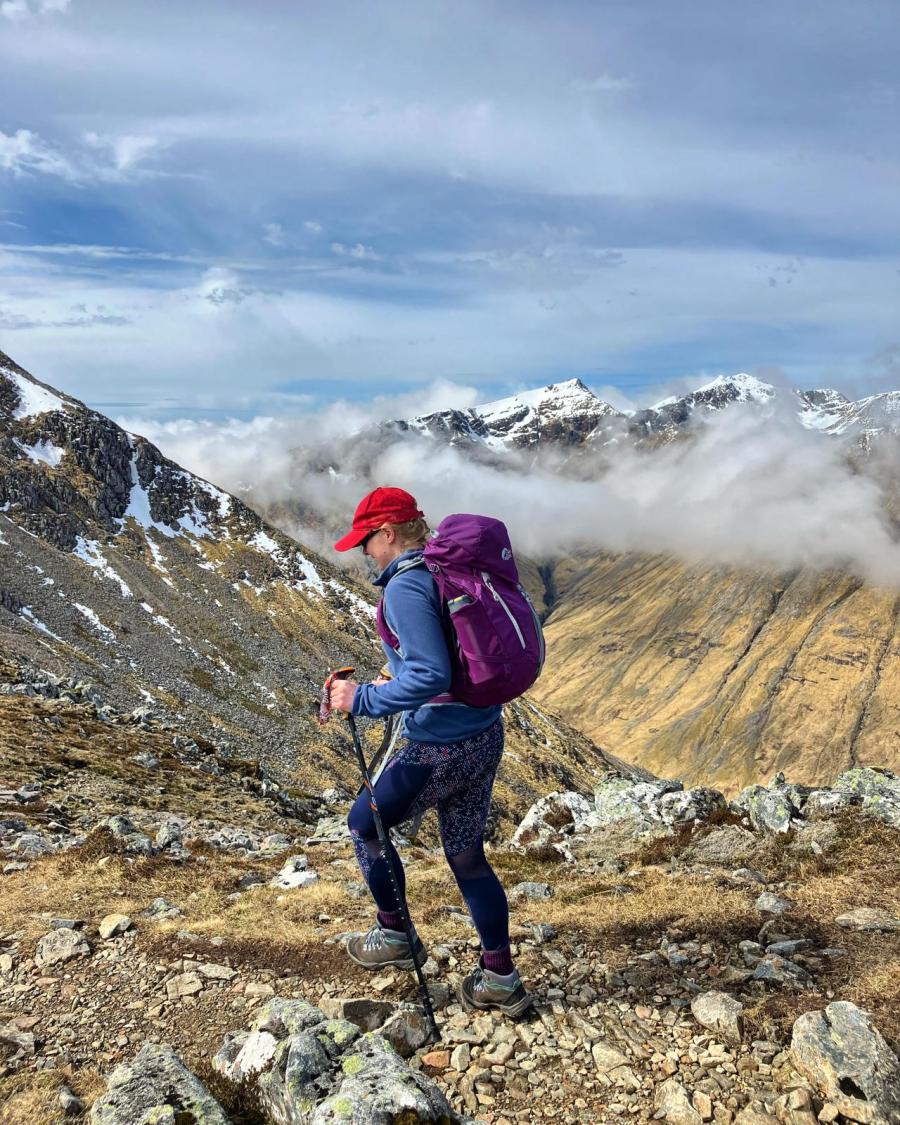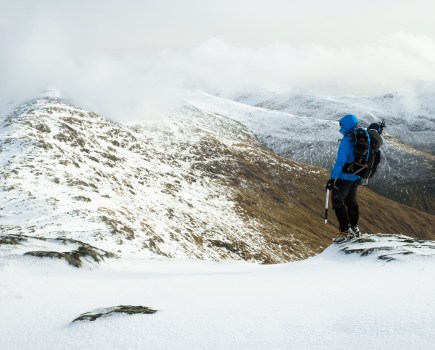Keri Wallace, Mountain Leader, founder of Girls on Hills and mountain runner, shares her hill fitness hacks, tips on avoiding ‘weekend warrior’ traps, and the secrets of how to do move fast in mountains with less.
It’s a familiar story. You love hillwalking and want to move fast in mountains to make the most of your time, but life keeps getting in the way. Your fitness isn’t what it used to be or perhaps you want to do more but have precious little time available.
Main image: On Buachaille Etive Beag | Credit: Amandla Taylor
If this sounds like you, you may wonder whether there’s an easy way to improve and maintain your hill fitness while capitalising on your free time, doing more with less!
Hill fitness for life
If your goal is fitness for life, ask yourself how sedentary you are in your daily routine. How much ‘time on feet’ do you have day-to-day? Many of us have desk-based jobs and are inactive for hours at a time, cramming huge outdoor adventures into our weekends. Unfortunately, this ‘weekend warrior’ approach makes our bodies more vulnerable. Without the training effect of weight-bearing and regular exercise, the necessary strength and stability is simply not there to allow us to do the same dynamic movements we used to when we were younger, increasing the chance of slips and trips. By suddenly ramping-up the mileage and metres climbed at the weekend, the body is also more vulnerable to over-use injuries like strains and sprains. And if we don’t raise our heart-rate regularly, we’ll always feel out of puff on the hill.
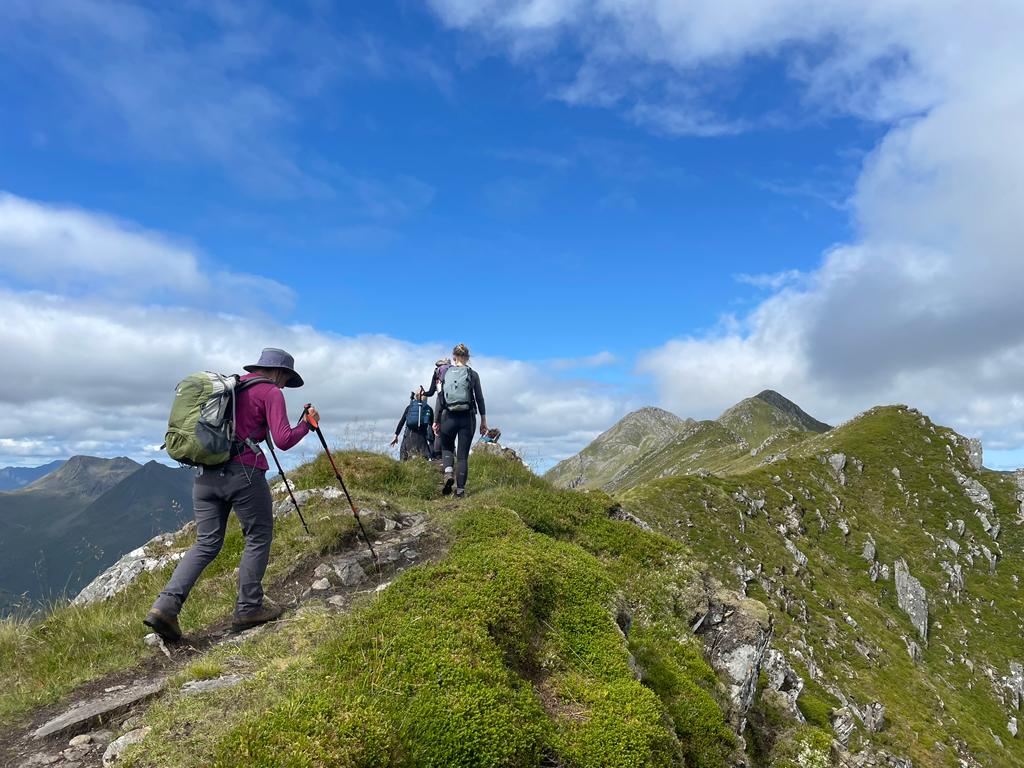
Walking the Five Sisters of Kintail. Credit: Keri Wallace
To injury-proof your body and build the aerobic base you need to hike all day, start by taking a more holistic view of your routine. In an ideal world, everyone would exercise daily, building-up gradually, using cross-training (i.e. mixing up disciplines like swimming, running or cycling) to help avoid niggles.
If time is tight, don’t overlook the everyday stuff! Can you swap the lift for the stairs, walk or cycle to work, go to the gym at lunchtime or try a standing desk/chair in the office? When it comes to building hill fitness, aim for specificity in the activities you do. Seek out rough and uneven terrain whenever you can to strengthen ankles. If you walk the dog, take a hillier route or carry your packed ‘hill bag’ to build relevant strength and fine-tune your balance when walking with a load. If you’re already a gym-goer, up the treadmill incline or embrace the StairMaster! Making small changes daily can make a big difference.
Whilst there’s nothing like time in the hills for improving stamina, regular hillwalking is not an option for those of us who live a long way from mountains. Thankfully, a targeted strength and conditioning (S&C) programme can prepare the body in a similar way. The best news? This can be done at home for free! The most useful S&C exercises will target the bigger leg muscles, including quads, hamstrings, glutes and calves. For example, squats, step-ups, lunges, lateral band walk, and calf-raises. Aim to complete a session twice a week and add single-leg balance drills for improved stabilisation.
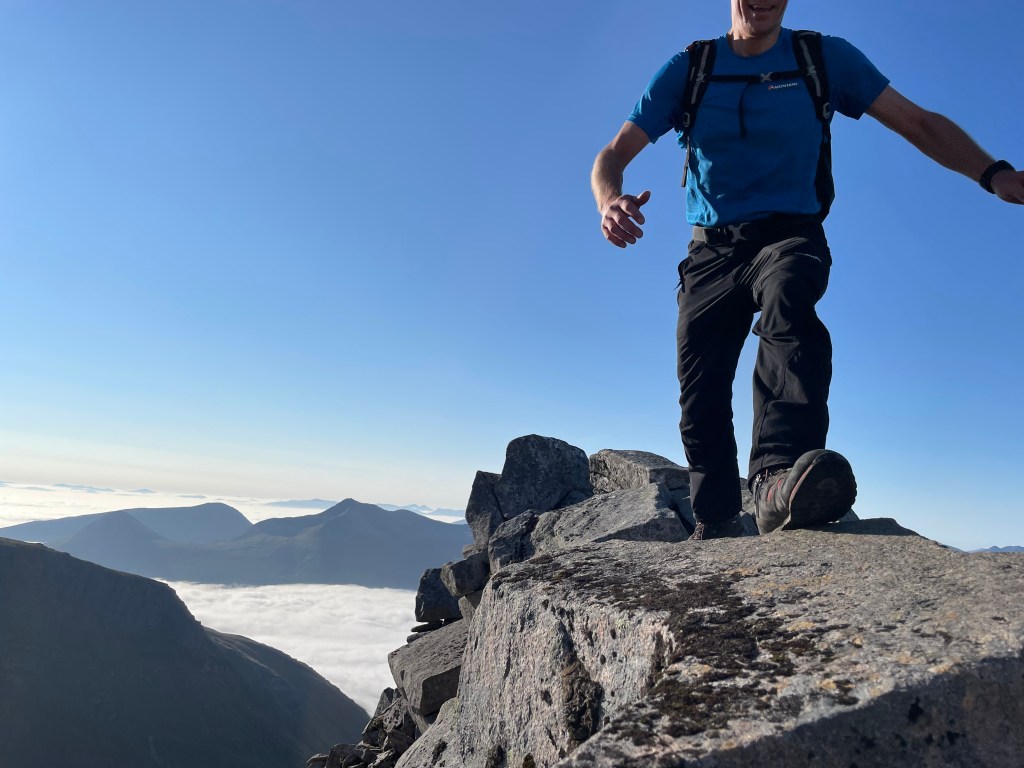
Scrambling the CMD arete. Credit: Keri Wallace
If you’re new to training for the hills, remember that fitness looks different for everyone. Start easy, build up slowly from your own starting point and prioritise recovery.
Fast and light
Another way to get more from your body is to move more efficiently. Making your hill bag lighter is the most obvious way to save energy in the mountains but what can be left behind without impacting your safety? The answer lies in finding lightweight alternatives to all the products you carry, from waterproofs to lunch – and even the backpack itself! This can be a compromise of course, as ultralight kit is often less durable and more expensive. You will also move more comfortably if your pack is snug-fitting, with good weight distribution (aim for heavy items towards the back and bottom).
Another way to save weight is to use lightweight boots or trail shoes as opposed to heavier traditional hiking boots. The old adage ‘one pound on your feet equals five pounds on your back’ is actually true! The flex offered by most modern, lightweight shoes can also help make your gait and foot placements more natural, responsive and precise.

Walking through the Lost Valley, Glen Coe. Credit: Keri Wallace
What’s the heaviest thing is your bag? Probably all that water you’re carrying! Pack plenty without overloading. Study your route to locate safe sources for refilling on the hill. For less than £10 you can buy yourself a soft/speed-cup and sip from streams without even stopping! Adding electrolytes to your water can further help improve your hydration by replacing salts lost through sweating – especially important on hot days. Even slight dehydration will slow your pace and make everything feel harder. The same can also be said about layering. Take the time to make yourself comfortable because overheating is a sure way to feel like you’re working too hard.
When it comes to the aptitude with which we move over rough and technical terrain, practice makes perfect. Thanks to neuromuscular micro-efficiencies that build with repetition, the more you do it, the better you will become. When ascending, avoid overstriding by taking smaller steps. Look up and ahead, and resist slumping over at the waist. Walking poles can help encourage this upright posture and give added stability, thereby reducing energy wasted on poor footing.
Forgo the faff
The easiest way to go further in the hills is to reduce the time you spend faffing along the way! Reduce your faff-factor by packing your bag for easy access (snacks, water and map should be handy, with your waterproof near the top for easy layering). Snack little and often rather than stopping for extended picnic breaks. Make sure your navigation is slick by way of careful planning and visualisation.
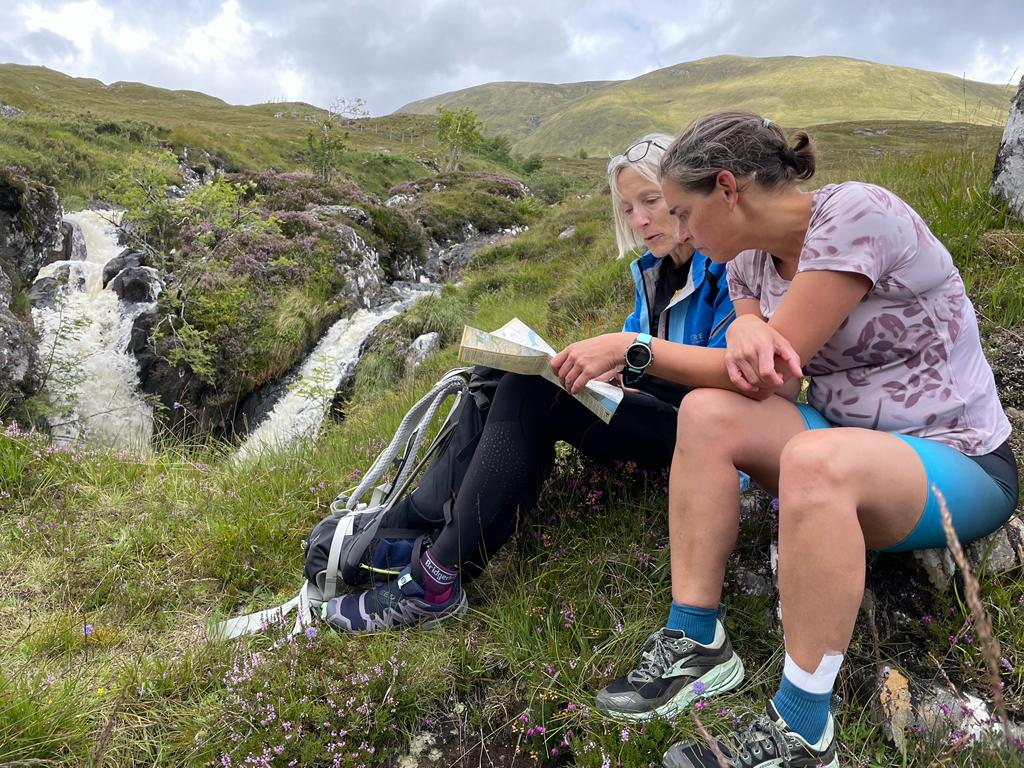
Navigating in Glen Affric. Credit: Keri Wallace
But don’t be tempted to rush key decision-making, as a navigation error will be the biggest waste of your time on the hill. Always calculate how long your route should take to help manage expectations – and why not choose a route with the wind on your back for an extra boost! Avoid wasting precious time treating blisters or chafing by getting to know your clothing and equipment in ‘training’ ahead of your adventures. Find out what works and stick with it.
Even if your intention is to move really quickly and efficiently in the hills (so-called ‘fast-hiking’), remember not to start out too fast. Intelligent pacing will save you time overall. It’s better to be steady and consistent throughout than to ‘blow-up’ on the first big climb, and then struggle to the end! Be warned: sticking to your guns is tricky in an ambitious group!
Your mindset can also be a strength or a weakness. Turn this to your advantage by remembering fitness takes time to build – don’t get disillusioned early on in the process. Hills are hard – it’s not just you! Our cardiovascular system takes a while to catch-up with the needs of our muscles at the start of a steep hike which makes it feel more strenuous initially. Being aware of this fact can make it easier to stay upbeat. We also tend to subtly increase our pace as we get fitter, so it can often feel like climbing mountains never gets any easier! Remind yourself of this, pay close attention to what motivates you and ‘back yourself’ when the self-doubt creeps in.

